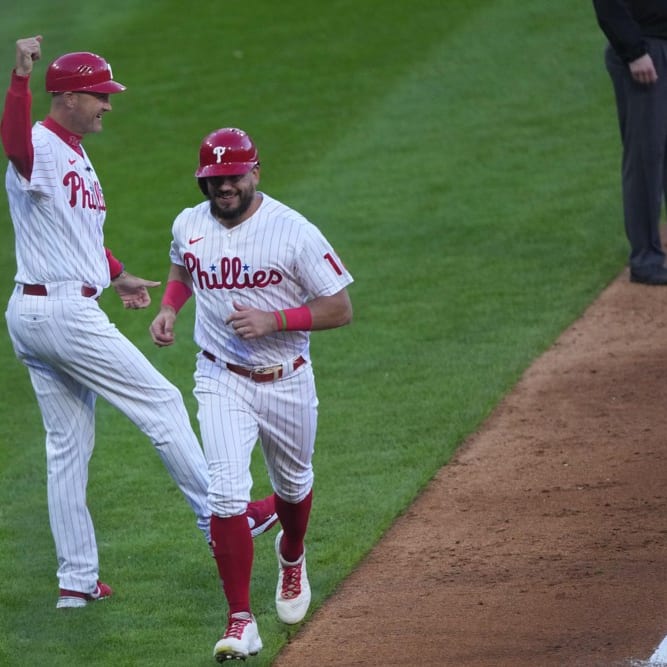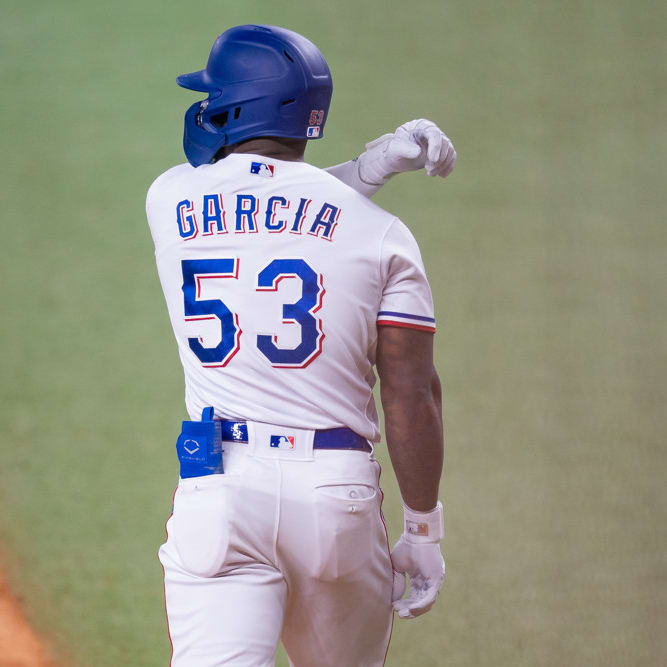This article is part of our The Saber's Edge series.
Last week I addressed changes I would make looking back at my 2015 drafts/auctions, focusing on how to target older hitters. This week, I will move on to where I missed with pitchers. I normally spend less on pitching than most owners, probably to a fault. I will focus on three areas I found lacking on my teams, elite starting pitching, elite relief pitching and how to handle potential breakout candidates.
As I said, I am notorious for not spending on pitching. In one league, I budget only $5 total for relief pitchers. Most of my strategies have worked in the past, but I think I need to adjust my miserly ways a bit to take a step forward. Here are three areas I noticed I need to improve.
Spend a more on my bullpen, especially for talented pitchers
With bullpens, I usually just try to rank pitchers by their projected K%-BB% and end up with the last few who are available. In an AL-only league (Saves+Holds), I have been putting out the likes of Zach Duke, Darren O'Day and Junichi Tazawa for a total salary of $3. O'Day has performed as I hoped with an 11.5 K and 1.17 ERA. The other two not so much with ~9.0 K/9.
And there lies my problem, not enough strikeouts at the end of the season from my relievers. In most leagues I need a number of required relievers, but they are just putting me behind in strikeouts because I
Last week I addressed changes I would make looking back at my 2015 drafts/auctions, focusing on how to target older hitters. This week, I will move on to where I missed with pitchers. I normally spend less on pitching than most owners, probably to a fault. I will focus on three areas I found lacking on my teams, elite starting pitching, elite relief pitching and how to handle potential breakout candidates.
As I said, I am notorious for not spending on pitching. In one league, I budget only $5 total for relief pitchers. Most of my strategies have worked in the past, but I think I need to adjust my miserly ways a bit to take a step forward. Here are three areas I noticed I need to improve.
Spend a more on my bullpen, especially for talented pitchers
With bullpens, I usually just try to rank pitchers by their projected K%-BB% and end up with the last few who are available. In an AL-only league (Saves+Holds), I have been putting out the likes of Zach Duke, Darren O'Day and Junichi Tazawa for a total salary of $3. O'Day has performed as I hoped with an 11.5 K and 1.17 ERA. The other two not so much with ~9.0 K/9.
And there lies my problem, not enough strikeouts at the end of the season from my relievers. In most leagues I need a number of required relievers, but they are just putting me behind in strikeouts because I lose 10 to 20 strikeouts compared to other relievers. These add up over the course of a season, and I have to make up 50 to 100 strikeouts with my starters, which are normally on the weak end because of stingy ways.
I remembered when one strikeout per inning was all that was needed to be an elite-caliber reliever, and I might be stuck in this mentality. Of the 137 qualified relievers, 58 have a K/9 greater than 9.0, or 42.3 percent. Five years ago it was 48 of 134 (35.8 percent). And 10 years it was down to 25 of 127 (19.7 percent) or half of this season's total. In 2015, the 20-percentile value is 10.5 K/9 (or 30 percent K%).
Looking at the RotoWire rest-of-season projections, 28 relievers have a K/9 projected over 10.5. In my keeper leagues, I will start to target these pitchers now. While I ignore ERA as a facture, I will see which of these pitchers have a low walk rate and also will be in line for saves and/or holds.
For 2016, I will go over this list of high-strikeout relievers and figure out which three or four to target and their costs (round taken or auction value) and budget accordingly. I seem to be able to find a fifth outfielder or two-start pitcher off the waiver wire, but these elite high-K closers are off the market. I need to adjust accordingly.
Getting some front-end starters (or at least pitchers who can be)
For the 2009 season, I wasted a first-round pick on Brandon Webb when he threw his final four innings in the majors before blowing out his elbow. I swore to myself to never take a pitcher in the first round again. While I haven't taken one in the first three rounds since, my stance has change a bit over the years, and I think it may have to change some more.
I think I can target pitchers others will undervalue compared to their skills. The problem is I end up targeting too many of these low-end guys. These pitchers may turn into OK middle-of-the-rotation starters, but they will still be middle-of-the-rotation guys. They are not the top-end pitchers needed to move from the middle to the front of the pack.
What I need to concentrate on instead is finding value in each tier of pitchers. To do this I would get the number of starting pitchers needed in the league, rank them and then go down dividing each group by the numbers of teams in the league. For example, in a 12-team league, the top 12 pitchers would be in a group and so on down the list. This would hopefully put the teams on even footing. Now the owner will need to go through each tier finding the values by comparing preseason ranks and mock drafts. Sleepers can still be targeted, but I make sure I grab some top-end talent also.
For borderline breakouts, cut the cord early
One of the hardest things to do in fantasy baseball is admitting you were wrong on a player. It is tough to move on. An owner spends the entire offseason looking for potential breakouts, some are spotted and then they are picked up on the cheap. The owner feels good until the season starts and the pitchers fall flat on their face. For me, this season those two pitchers were T.J. House and Shane Greene.
They both made changes to their games that could have continued into 2015. The problem is that neither was able to keep the changes in place this season. House lost velocity and was hurt, and Greene quit generating as many groundballs and swinging strikes with declining velocity.
Some pitchers who were living on the edge, like Jacob deGrom, progressed and are probably top-20 pitchers entering next season. Others did not. Here are the two keys I check to see if pitchers will fall off:
1. Prospect pedigree. Pitchers usually don't just get their skills at Triple-A. Instead, they've had these skills for years before making it to the majors. Greene and House both were missing these desirable traits and the prospect pedigree that goes along with them. Other owners and prospect writers thought these borderline pitchers didn't have skills for a reason.
2. Move on immediately if they struggle. If a true talent struggles it means he isn't good enough to break out. Look for changes in walk, strikeout and batted-ball tendencies. They rode a fine line to get to the majors, and if their skills head south, so will their chance to be a productive major leaguer.
The key is to then move on. Know when you pick up these potential breakouts that they might not be on your team much longer. These are expendable picks and can be quickly replaced.
I am starting fall in love with Robbie Ray and Taylor Jungmann for 2016 targets. Both really struggled until this season and have begun to turn it on. I like their potential, but they could decline quickly if they regress back to their previous production levels. I need to limit my attraction to both.










